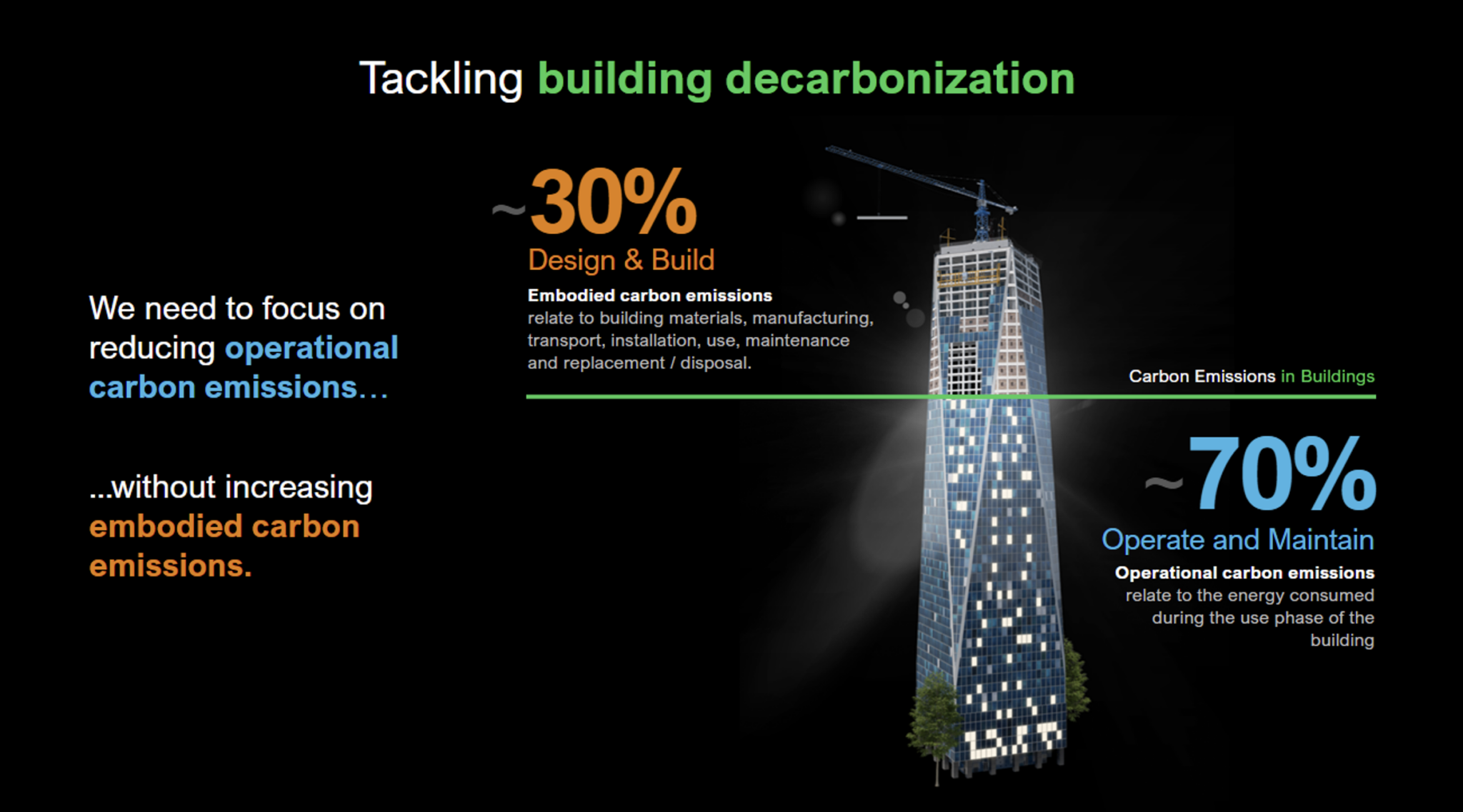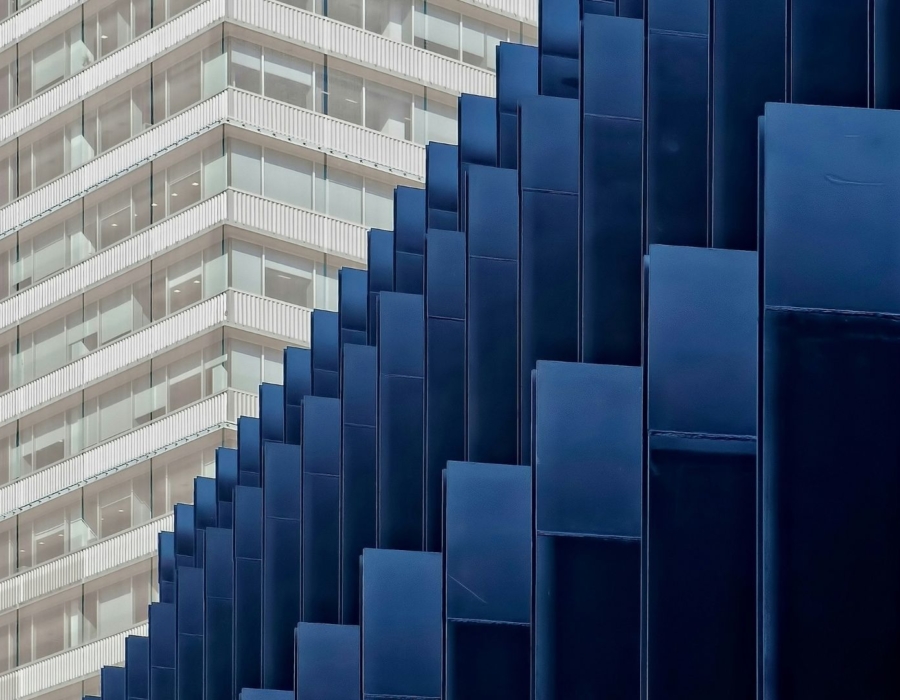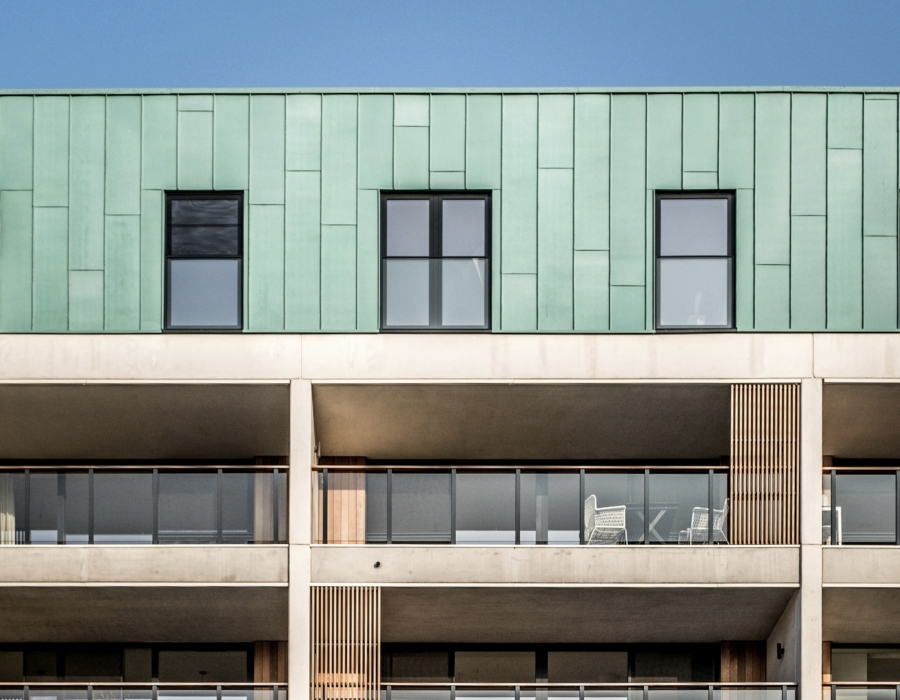Our industry is engaged in an important dialogue to improve sustainability through ESG transparency and industry collaboration. This article is a contribution to this larger conversation and does not necessarily reflect GRESB’s position.
As global awareness around human-induced climate change gains momentum, the intersection of biodiversity and decarbonization in the built environment has emerged as a critical focal point. Understanding how these two elements intertwine provides valuable insights into creating a sustainable future where human communities and activities harmonize with those of nature.
GHGs, climate change, and buildings
The connection of human activity with climate change lies in greenhouse gas (GHG) emissions – these being chemicals that trap heat in the earth’s atmosphere and cause the average annual surface temperature to rise. GHGs include chemicals such as carbon dioxide, methane, nitrous oxide, and fluorinated gases, which are emitted in great quantities through the production and combustion of fossil fuels such as coal, natural gas, and oil, as well as the use of certain refrigerants, agricultural practices, and other processes.
Scientists have given policymakers the key target of limiting global temperature rise to under 1.5°C above pre-industrial temperatures as the critical threshold for avoiding the most harmful impacts of climate change. To achieve this target, human activities across all sectors – including buildings, industry, transportation, and agriculture – need to be rapidly decarbonized.
According to Architecture 2030, the built environment currently accounts for about 42% of annual global CO2 emissions, and the global building floor area is on pace to double by 2060. Achieving the global target limit of 1.5°C temperature rise requires rapid decarbonization of the built environment.
How climate change affects biodiversity
Rising temperatures place biodiversity – the variety of life on Earth – under severe threat as organisms face new stresses and challenges. Research into how climate change may push species over tipping points concludes that at 1.5°C of global warming, 15 percent of all animal species on earth (including mammals, amphibians, reptiles, birds, corals, fish, cephalopods, and plankton) are at risk of experiencing unfamiliarly hot temperatures across at least 30 percent of their existing geographic range in a single decade. This risk doubles to 30 percent of species if global temperatures rise by 2.5°C. And beyond the immediate impact of increased heat, rising temperatures also set in motion a plethora of destabilizing effects, such as changes in ocean currents, increased frequency and severity of storms and floods, droughts, disruption of freeze/thaw cycles, and more – all of which impact the habitats that plants and animals need to survive.
Other ways buildings impact biodiversity
While dense urban environments can be optimal for sustainable human communities, the expansion of urbanization can lead to habitat loss and fragmentation, severely impacting biodiversity and ecology. For example, the construction of infrastructure in forested areas results in the loss of habitat for countless species, leading to a decline in biodiversity. The World Wildlife Fund (WWF) reported in the Living Planet Report 2022 that over 69 percent of global biodiversity loss since 1970 is due to land use changes, including urban development. Additionally, the extraction and processing of materials that buildings rely on, such as concrete, steel, and battery minerals, can further degrade natural habitats and ecosystems.
The impacts of pollution from building emissions go beyond warming the atmosphere to harm biodiversity. A study by the European Environment Agency, 2022 highlighted that nitrogen oxide (NOx) emissions from buildings can lead to eutrophication in water bodies, whereby excess nutrients spur algae and plant growth, leading to low oxygen levels and pH changes in aquatic habitats that create harmful algal blooms and dead zones. Moreover, the use of synthetic chemicals and materials in construction, in conjunction with poor construction pollution prevention practices, can lead to the leaching of harmful substances into the soil and water, further impacting wildlife.
By decarbonizing buildings, we also reduce environmental pollution, leading to cleaner air and water. This improvement in environmental quality is critical for maintaining and reconstructing healthy ecosystems and diverse species populations.
Getting GHGs out of buildings
GHG emissions from buildings can be attributed to two main sources: their construction and operation. Operational emissions, currently about 70 percent of a building’s total emissions, result from the ongoing operation of energy-using systems for activities such as heating, cooling, ventilation, and running everything plugged into an outlet. Operational emissions of most current buildings include both direct emissions from on-site fuel combustion and indirect emissions from grid electricity use. Embodied emissions, currently about 30 percent of the total, are associated with the emissions generated throughout the lifecycle of building materials (including emissions generated through extraction, production, transport, installation, maintenance, and disposal of the material).

As building systems are electrified and benefit from utility grids becoming supplied with clean renewable energy, more of the building’s overall carbon footprint will be embodied rather than operational.
High-performing building materials are needed, both to achieve high levels of occupant comfort and to limit the building’s overall energy demand, something which is vital for enabling available onsite energy generation meet building loads throughout the year, and for ensuring resilient power grids. However, this relationship underscores the need for a dual approach in tackling building decarbonization: reducing operational carbon emissions without increasing embodied carbon emissions.
The World Economic Forum recognizes that 80 percent of current building stock will exist in 2050. To fully decarbonize the built environment, it is therefore essential to address both new construction and existing buildings through retrofitting. Both new construction and existing building retrofits can utilize the following steps to reach net-zero carbon emissions:
- Minimize energy demand through high-performance envelopes and efficient energy-using systems.
- Install low-carbon materials.
- Utilize low global warming potential (GWP) refrigerants.
- Optimize operational efficiency through commissioning and maintenance.
- Generate on-site renewable energy.
- Procure off-site renewable energy.
- Offset the balance of unavoidable emissions.
Sustainable building materials for biodiversity
Using sustainable, low-carbon materials in construction supports biodiversity by preserving natural habitats and reducing resource extraction pressures. One of the most stunning examples of this is in wood building products. Since trees naturally sequester carbon, wood products have much less lifecycle carbon impact than steel, in many cases being carbon negative. So, exploring ways to incorporate more wood and less steel into structures and finishes can greatly reduce a project’s embodied carbon load.
Furthermore, wood is highly recyclable and can often be sourced locally. Sustainably managed forests provide high-quality timber while maintaining intact forest ecosystems. The Forest Stewardship Council (FSC) certifies over 200 million hectares of managed forests globally, ensuring that timber production does not compromise biodiversity.
Nature-based solutions
Nature-based solutions in urban design, such as green roofs, living walls, and urban rewilding, can enhance local biodiversity while contributing to the decarbonization of the built environment. These features provide habitats for various species of native birds, insects, and plants, while sequestering carbon and reducing the urban heat island effect. Research from the European Environment Agency indicates that green roofs can also reduce a building’s energy use by up to 15 percent. Green infrastructure can also help retain and utilize stormwater onsite. By reducing pollution to local waterways while cutting the building’s demand for potable water, green infrastructure in buildings helps preserve biodiversity both upstream and downstream of the building.
Common goals
Biodiversity and decarbonization are not independent objectives, but rather integral factors necessary for a sustainable built environment to be possible. The reciprocal relationship between decarbonization and biodiversity underscores the need for comprehensive, integrated approaches in urban planning, construction, and building operations, ensuring a resilient and vibrant planet for future generations.
This article is written by Sustainability Intern Sadaf Bilal Ansari and Director Bryan Hadick at CodeGreen.
References:
“Global Warming of 1.5 ºC.” The Intergovernmental Panel on Climate Change. Accessed July 2, 2024.
“Why the Built Environment.” Architecture 2030. Accessed July 2, 2024.
“69% average decline in wildlife populations since 1970, says new WWF report.” World Wildlife Fund. Accessed July 2, 2024.
“Air quality in Europe 2022: Impacts of air pollution on ecosystems.” European Environment Agency. Accessed July 2, 2024.
Grainger, Guy. “To create net-zero cities, we need to look hard at our older buildings.” World Economic Forum. Accessed July 2, 2024.
“What is FSC?” Forest Stewardship Council. Accessed July 2, 2024.
Jia, Siqi, Qihao Weng, Cheolhee Yoo, Huijuan Xiao, and Qingwei Zhong. “Building energy savings by green roofs and cool roofs in current and future climates.” NPJ Urban Sustainability. Accessed July 2, 2024.


